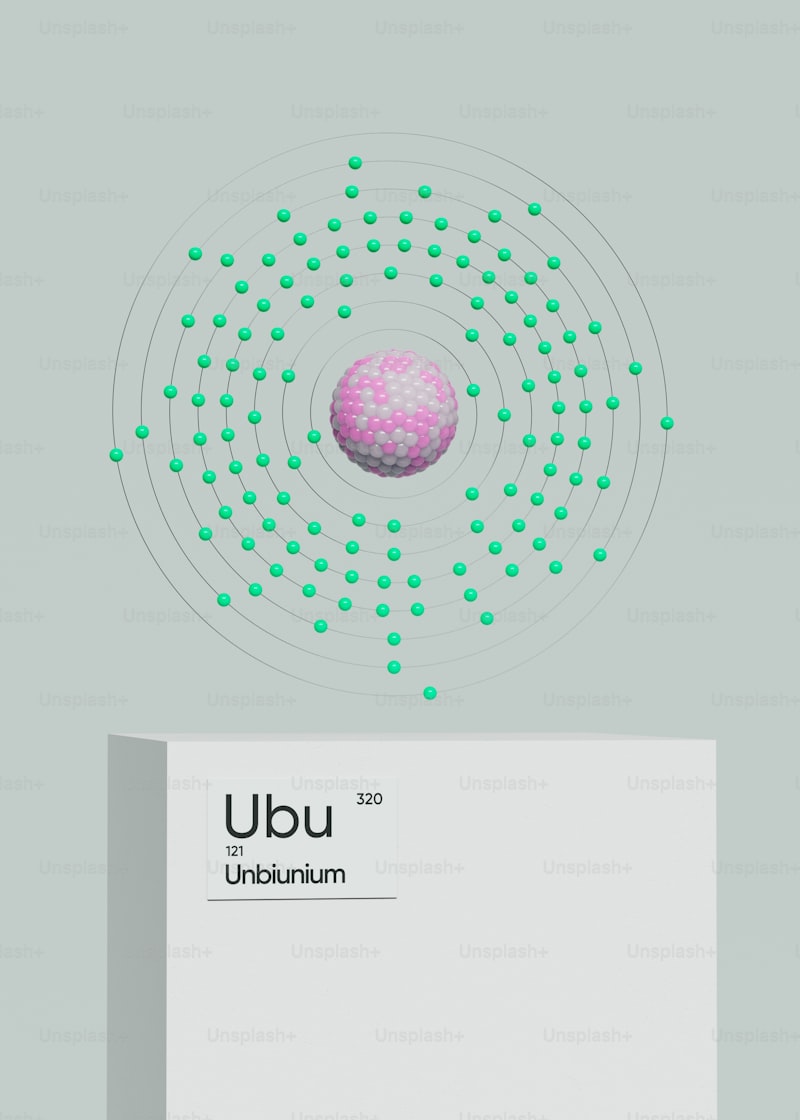Imagine trying to understand a complex set of data just by looking at rows and rows of numbers. It’s like trying to find a needle in a haystack blindfolded! This is where data visualization swoops in like a superhero with a cape. It takes those boring numbers and transforms them into colorful charts, graphs, and diagrams that tell a story at a glance.
So, how can you leverage data visualization to work wonders for you or your business? Let’s break it down.
Firstly, data visualization makes information digestible. Instead of staring at spreadsheets, you can quickly grasp trends, patterns, and correlations. Think of it as turning a jigsaw puzzle into a beautiful picture where every piece fits perfectly to reveal the big picture.
Secondly, it enhances decision-making. When you see data visually, you can spot outliers or anomalies that might be missed in raw data. This helps in making informed decisions faster, whether you’re managing finances, analyzing customer behavior, or tracking project milestones.
Moreover, data visualization sparks insights. Sometimes, numbers alone don’t reveal the whole story. Visual representations add layers of context that prompt questions and discoveries. It’s like seeing constellations in the night sky—suddenly, the dots connect to form meaningful shapes.
Furthermore, it improves communication. Sharing insights with others becomes much easier when everyone can see the same visual story. Whether you’re presenting to stakeholders or teaching a class, visuals transcend language barriers and make information universally understandable.
Lastly, data visualization fuels innovation. By exploring data in creative ways, you might uncover new ideas or strategies that were hidden in plain sight. It’s like being a detective in a mystery novel—each visualization is a clue that leads to a breakthrough.
In essence, data visualization isn’t just about making pretty pictures; it’s about unlocking the power of data to drive understanding, decisions, and innovation. So, whether you’re a business analyst, a researcher, or simply curious about the world around you, embracing data visualization can open doors to a whole new level of insight and discovery. Ready to see your data in a new light?
Mastering the Art: Transforming Complex Data into Visual Stories
Visual storytelling transcends mere presentation—it’s about making data speak a universal language. Imagine transforming dense spreadsheets into interactive visuals that unveil trends at a glance, or turning statistical analyses into narratives that unfold like a compelling story. It’s about bridging the gap between raw numbers and human understanding.
The key lies in selecting the right visual elements that convey meaning intuitively. Just like a skilled artist chooses colors and textures, a data storyteller selects charts, graphs, and infographics that amplify the narrative hidden within the data. Whether it’s a bar chart showing growth over time or a heat map revealing regional variations, each visual component plays a crucial role in shaping the story.
But it’s not just about aesthetics; it’s about engagement. A well-crafted visual story grabs attention, provokes thought, and invites exploration. It’s the difference between a list of numbers and a journey of discovery. By leveraging visuals, data storytellers empower audiences to grasp complex concepts effortlessly, fostering deeper insights and informed decision-making.
Moreover, mastering this art requires more than technical skills—it demands creativity and empathy. It’s about understanding your audience and tailoring visuals to resonate with their perspectives. Like a skilled storyteller, you weave context and emotion into your visuals, transforming data points into meaningful insights that inspire action.
In essence, mastering the art of transforming complex data into visual stories is a blend of science and creativity. It’s about illuminating patterns, distilling insights, and fostering understanding through visuals that captivate and inform. So next time you face a mountain of data, think beyond numbers—think of the story it yearns to tell.
Unlocking Insights: Harnessing the Power of Data Visualization
Ever wondered how a simple graph or chart can unveil complex patterns and trends hidden within mountains of data? Welcome to the world of data visualization, where numbers and statistics transform into vivid stories and actionable insights. In today’s data-driven era, the ability to interpret and communicate data effectively is more crucial than ever. Let’s dive into how harnessing the power of data visualization can revolutionize your understanding and decision-making processes.
Data visualization is like a magic lens that magnifies the essence of data, making it accessible and understandable for everyone, from analysts to executives. Instead of drowning in spreadsheets and databases, visual representations like interactive charts, infographics, and dashboards offer a clear path to insight. Imagine exploring sales trends over time through a dynamic graph or understanding customer demographics at a glance through a color-coded map – that’s the power of visualization.
One of the key advantages of data visualization lies in its ability to highlight correlations, outliers, and patterns that might otherwise go unnoticed. For instance, a scatter plot can reveal a strong relationship between two variables, prompting further investigation into underlying causes. Similarly, a heat map can pinpoint geographical areas with the highest customer engagement, guiding targeted marketing strategies.
Moreover, data visualization isn’t just about presenting findings; it’s about storytelling. By combining data with narrative elements, visuals can captivate audiences and convey complex ideas in a compelling way. Imagine presenting a quarterly report with vibrant charts that not only showcase financial performance but also tell the story of challenges overcome and opportunities seized.
In addition to clarity and storytelling, data visualization enhances decision-making by fostering data-driven insights. Whether you’re optimizing supply chains, predicting market trends, or improving operational efficiency, visualizing data transforms abstract numbers into actionable strategies. It empowers stakeholders to make informed decisions swiftly, based on a comprehensive understanding of the data landscape.
The era of big data demands more than just numbers on a spreadsheet – it requires a transformative approach to understanding and utilizing information. Data visualization serves as a powerful tool in this journey, unlocking insights that drive innovation and growth. So, embrace the art of visualizing data, and discover the stories your data has been longing to tell.
From Numbers to Narratives: Crafting Compelling Visual Data Experiences
Visual data experiences are more than just graphs and charts; they’re narratives waiting to unfold. Imagine scrolling through a website and encountering a vibrant infographic that effortlessly explains complex trends or a dynamic chart that tells the story of growth and innovation. These visual elements are designed not just to inform, but to engage, to evoke curiosity, and to spark meaningful connections with the data presented.
Why do visual data experiences matter? It’s simple: they break down the barrier between data and understanding. Instead of sifting through spreadsheets or dense reports, audiences can absorb information quickly and intuitively. This accessibility is key in a world where attention spans are fleeting and the demand for instant comprehension is high.

Think of visual data experiences as storytellers with a mission—to simplify the complex and to reveal insights that might otherwise be buried in rows of numbers. They transform data points into characters in a narrative, each contributing to the overarching plot of your business strategy, market analysis, or scientific discovery.
Moreover, these visualizations aren’t just about aesthetics; they’re powerful tools for persuasion and decision-making. Whether you’re presenting to investors, educating students, or engaging customers, a well-crafted visual data experience can sway opinions, drive actions, and foster a deeper understanding of the subject matter at hand.
In essence, crafting compelling visual data experiences is an art form—an art that blends creativity with analytical rigor, turning information into inspiration. It’s about seeing beyond the numbers and uncovering the stories that lie within. So next time you encounter a bar chart or an interactive map, remember: there’s more to it than meets the eye. It’s a gateway to a narrative waiting to be explored, a story waiting to be told.
Visualizing Success: Strategies for Effective Data Communication
Ever felt lost in a sea of numbers and graphs? We’ve all been there. But fear not, because mastering the art of data visualization can transform complexity into clarity, helping you convey insights like a pro.
Effective data communication is more than just pretty charts; it’s about telling a compelling story with your data. Imagine your data as a narrative, where each point and trend builds upon the next, guiding your audience through a journey of discovery.
One key strategy is choosing the right visual format. Just like picking the perfect outfit for an occasion, selecting the right chart or graph sets the tone for how your data will be perceived. Bar graphs for comparisons, line charts for trends, and pie charts for proportions—each serves a unique purpose in highlighting different aspects of your data story.
Next, consider simplicity as your guiding principle. Too much information at once can overwhelm even the keenest minds. Simplify your visuals to focus on what truly matters. Remember, clarity triumphs over complexity every time.
Engagement is another crucial element. Think of your audience as explorers in a foreign land—your visuals are the map guiding them through unfamiliar terrain. Use colors strategically to emphasize important points, and annotate your visuals to provide context and explanations where needed.
Moreover, interactivity can take your data communication to the next level. Imagine allowing your audience to manipulate parameters or drill down into specific data points themselves. This hands-on approach not only engages them but also empowers them to derive their own insights.
Finally, don’t forget the power of storytelling. Numbers alone can be dry, but when woven into a narrative that resonates with your audience, they become meaningful and memorable. Ask yourself: What story does my data tell? How can I make it compelling and relevant to my audience?
In essence, effective data communication blends artistry with science. It’s about transforming raw data into a visual masterpiece that captivates, informs, and inspires. By mastering these strategies—choosing the right visuals, simplifying complexity, engaging your audience, embracing interactivity, and storytelling—you’ll not only convey your data effectively but also leave a lasting impact.
The Power of Clarity: Simplifying Complex Data through Visualization
Imagine staring at rows upon rows of numbers and statistics, trying to make sense of trends or patterns. It’s like looking at a massive puzzle without knowing where to start. This is where data visualization swoops in like a superhero with a flashlight in a dark cave. Instead of sifting through endless data points, you get a clear, concise picture of what’s going on.
Think of it this way: you’re trying to explain a complicated concept to a friend. You could list facts and figures, hoping they understand, or you could draw a simple diagram or chart that instantly makes everything click. That “aha!” moment? That’s the magic of visualization. It turns abstract information into something tangible, something you can grasp with ease.
Charts, graphs, maps—they’re not just colorful additions to reports. They’re storytellers. They take raw data and weave it into narratives that speak volumes. A line graph trending upwards tells a tale of growth; a pie chart divides a whole into digestible slices. Suddenly, data isn’t just numbers; it’s a story waiting to be told.
But it’s not just about making data pretty. It’s about making it meaningful. When information is presented visually, our brains process it faster and retain it longer. That’s because visuals engage us on a different level. They tap into our innate ability to recognize patterns and relationships effortlessly.
Consider a weather forecast: you could read a table of temperatures and humidity levels, or you could glance at a map showing sunny spots and stormy areas. Which one gives you a quicker grasp of the day ahead? That’s the power of clarity through visualization.
Businesses thrive on clear insights. Decision-makers rely on charts to spot market trends, identify opportunities, and predict outcomes. It’s not just about making informed choices; it’s about making confident ones. When the path forward is illuminated by data visualizations, uncertainty fades away.
In essence, data visualization isn’t just a tool—it’s a game-changer. It breaks down barriers between complexity and understanding, turning oceans of data into navigable streams of insight. So next time you’re faced with a data dilemma, remember: clarity is just a visualization away.
Beyond the Charts: Innovating with Interactive Data Visualizations

Gone are the days of static charts that leave you squinting at tiny labels. With interactive visuals, data becomes dynamic and engaging. You can zoom in on specific time frames, hover over data points for detailed information, and even switch between different metrics effortlessly. It’s like having a conversation with your data, where every interaction uncovers a new perspective.
Take the example of a sales trend graph. Instead of a flat image, an interactive version allows you to explore sales figures by region, product category, or customer segment. Want to know how a marketing campaign affected sales in the northeast? Just click and watch the data unfold before your eyes. It’s as intuitive as using a map app on your smartphone—tap, swipe, and explore.
Businesses are harnessing this technology to make better decisions in real-time. Imagine a boardroom where executives manipulate a 3D model of market share trends, rotating it to uncover patterns that traditional reports might miss. This isn’t just about pretty visuals; it’s about actionable insights delivered with impact.
For educators, interactive data visualizations are revolutionizing how students learn. Complex concepts in science or economics are no longer confined to textbooks. Students can interact with simulations, manipulate variables, and see cause-and-effect relationships in real-time. Learning becomes a hands-on experience, sparking curiosity and deepening understanding.
Whether you’re a business analyst crunching numbers or a student exploring the mysteries of the universe, interactive data visualizations offer a powerful tool. They transform data from a mere collection of numbers into a rich tapestry of insights, waiting to be explored. So next time you see a chart, ask yourself: could this be more than just lines and dots?
Frequently Asked Questions
How Can I Choose the Right Data Visualization Tool
Learn how to select the best data visualization tool by considering factors like data type, audience, visualization types supported, ease of use, and integration capabilities. Understand your specific needs and match them with the tool’s features to effectively communicate insights from your data.
What are the Benefits of Data Visualization
Discover the advantages of data visualization with our concise FAQ. Learn how visualizing data simplifies complex information, enhances understanding, identifies trends, and supports data-driven decision-making across various industries.
What are the Key Principles for Effective Data Visualization
Learn the essential principles for creating impactful data visualizations. Discover how to effectively convey insights using clarity, simplicity, and relevance. Explore techniques for choosing appropriate visual formats, emphasizing accuracy, and ensuring accessibility for diverse audiences.
What Are Some Common Mistakes to Avoid in Data Visualization
Learn about common mistakes to avoid in data visualization. Improve your visualizations by steering clear of these errors and enhancing clarity, accuracy, and impact.
How Can Data Visualization Improve Decision Making
Learn how data visualization enhances decision-making by presenting complex information in easily understandable visual formats. Discover how visual analytics help identify trends, patterns, and insights quickly, empowering informed decisions across various domains.


